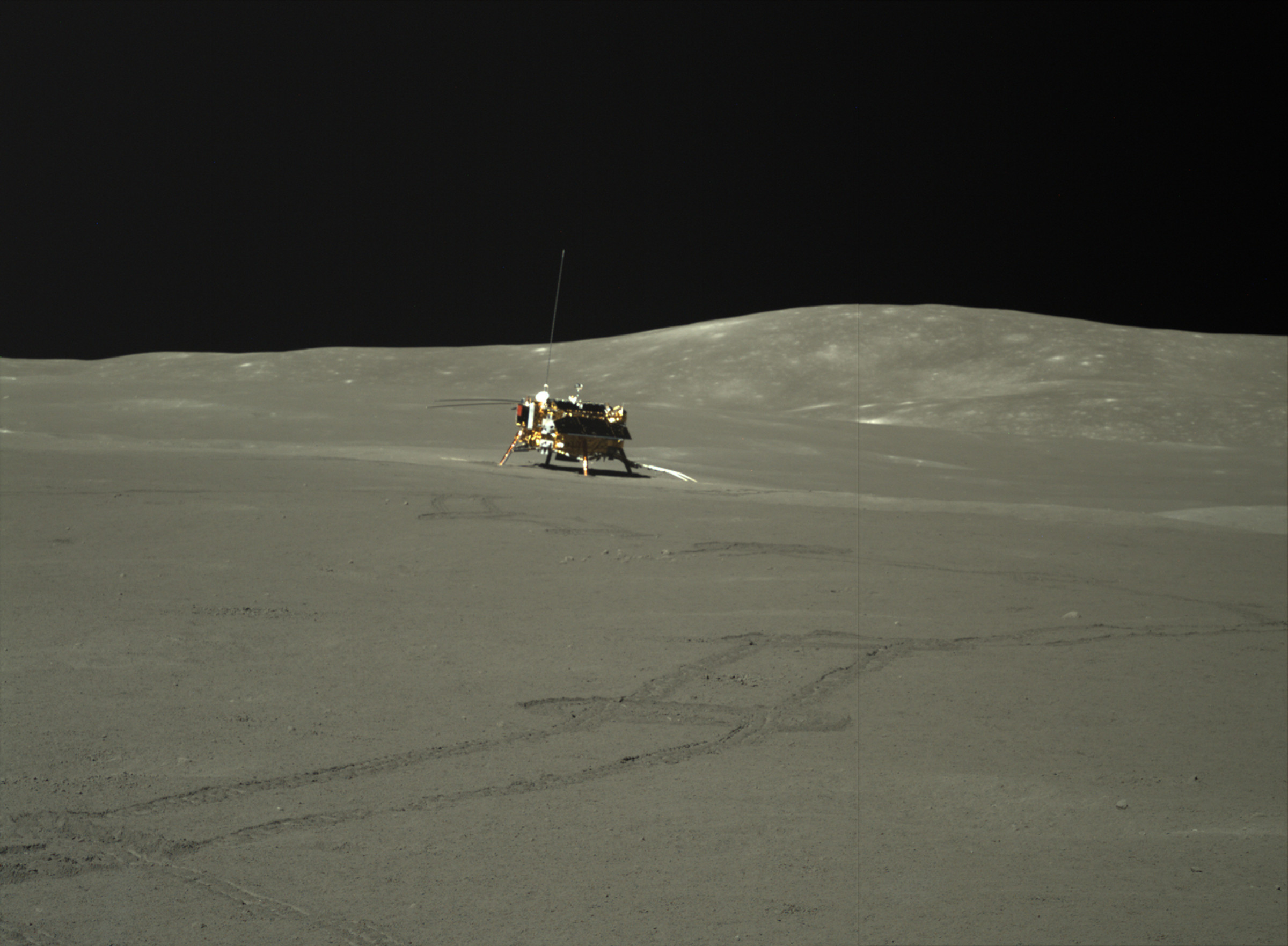 Earth & Space
Earth & Space
What the “invisible” side of the Moon is like
Standing on Earth we can only see one side of the moon, but what about the other side? China’s Chang’E-4 mission becomes the first one that has successfully investigated the lunar farside and revealed its underground layered architectures.

Imagine what you see when looking up at the night sky — the Moon, the Earth's only satellite. Have you ever noticed that you actually always look at the same side of the Moon? Have you perhaps wondered what the other side is like? Scientists have long strived to answer this question and to explore the "secret" side of the Moon.
Advanced technology may finally enable us to do so: in 2019, the Chinese robotic spacecraft mission named Chang'E-4became the first in history to successfully soft-land on the farside of the Moon and perform an in-depth investigation.
Effective approaches to studying the Moon often focus on impacts which formed lunar features such as craters and volcanic activities, as they have occurred throughout the Moon's evolution since the dawn of the solar system 4.5 billion years ago. Whoever wants to understand the Moon's history can look onto its surface and subsurface (underground) architecture formed as a consequence of these key events.
Chang'E-4 smoothly landed in the ancient Von Kármán crater, which is important as a part of the South Pole-Aitken Basin, the largest and the oldest lunar impact crater. The relatively flat floor of the Von Kármán crater was flooded with magma from ancient volcanic activity, which cooled and formed rocks named mare basalts. These rocks have been repeatedly struck by meteorites. The material they brought from outer space eventually formed a thick layer called ejecta blanket. The lunar surface is covered with this thick layer and it is important to "look" deeper to reveal the Moon's internal structure.
After landing, Chang'E-4 installed a robotic lunar explorer named Yutu-2 on the lunar surface. Yutu-2 can travel around the landing area and analyze its underground structures. It carries an instrument called ground-penetrating radar (GPR). This radar emits electromagnetic waves that can penetrate the lunar surface deep into the subsurface. As electromagnetic waves reflect and transmit through different material interfaces, lunar underground structures can be scanned as patterns of radar echoes.
GPR-based measurements were previously carried out by several missions: NASA's Apollo 17 in 1972, Japan's Kaguya in 2007, and China's Chang'E-3 mission in 2013. These missions, however, failed to understand the detailed subsurface architecture of the Moon's farside.
In this study, we aimed to reveal the underground architecture of the Moon's farside by analyzing the first GPR data obtained during the ongoing Chang'E-4 mission. We found that the GPR equipped onto Yutu-2 was able to penetrate up to 40 meters below the lunar surface, much deeper than during the measurements done by the previous spacecraft, Chang'E-3. The data revealed different geological settings of the landing sites of each of the spacecraft, with the Chang'E-4's landing site being much more transparent (penetrable) to electromagnetic waves. The radar of Chang'E-4 could thus successfully "see" three distinct lunar subsurface geological layers: the first layer, named fine-grained regolith or soil, is a blanket covering the lunar surface down to 12 meters. The second layer spans from 12 to 24 meters underground and contains many rock fragments. The third layer contains fine and coarse materials going down to 40 meters underground.
The finding of these characteristic subsurface layers reveals the complexity of lunar impacts and provides a unique insight into how the Moon has evolved over time. The Yutu-2 explorer has been working for 26 lunar days and, to date (Jan 2021), traveled the distance of about 627 meters. It will continue traveling and measuring the underground architecture of the lunar farside through GPR. We are looking forward to investigating in more detail the subsurface layers of the Moon. It will help us greatly to uncover how lunar impacts and volcanism dynamically shaped the lunar farside's geological architectures during its evolution, and better understand our neighbor in space.
Original Article:
Li, C. et al. The Moon's farside shallow subsurface structure unveiled by Chang'E-4 Lunar Penetrating Radar. Sci. Adv.6, 1-9 (2020).
Next read: A neighborhood in space: finding the Moon’s age to understand Earth’s evolution by Maxime Maurice
Edited by:
Dr. Akira Ohkubo , Associate Editor
We thought you might like
More from Earth & Space
Discovery of the first radiation belt beyond the Solar System
Jan 27, 2025 in Earth & Space | 3.5 min read by Juan Bautista Climent OliverOne million (paper) satellites
Jan 24, 2025 in Earth & Space | 3 min read by Ewan Wright , Andrew FalleVolcanic Ash: A Nutrient Boost for Reef-Building Corals
Sep 18, 2024 in Earth & Space | 4 min read by Frank Förster , Tom SheldrakeAmmonia Energy: A Call for Environmental Awareness
Aug 29, 2024 in Earth & Space | 3.5 min read by Matteo Bertagni , Robert Socolow , Amilcare PorporatoLikely increase in coral thermal tolerance at a Pacific archipelago
Dec 29, 2023 in Earth & Space | 3 min read by Liam LachsEditor's picks
Trending now
Popular topics


